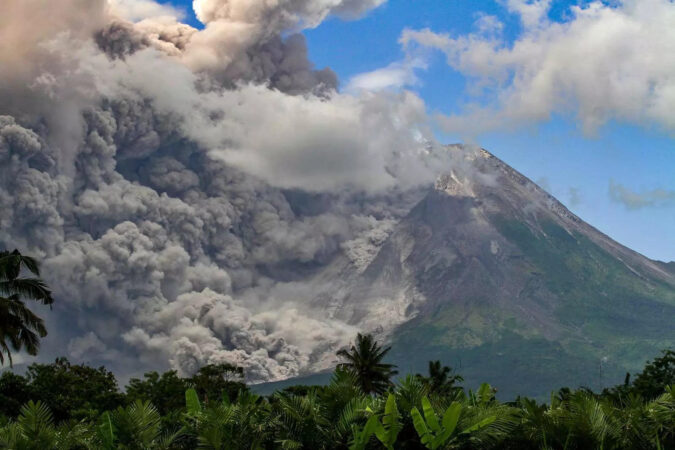JAKARTA: Indonesia‘s Merapi volcano erupted on Saturday, spewing hot cloud up to seven kilometres, the country’s disaster management agency said in a statement.
The volcano located in Indonesia’s Yogyakarta special region erupted around noon (0500 GMT) and a lava flow of 1.5 km was observed, the local authority said.
Residents in the nearby community have been warned to stop any activities in the danger zone range between three and seven kilometres radius from the crater, the statement said.
The 2,963 metre-high (9,721 feet) Merapi is one of Indonesia’s most active volcanoes and was already on the country’s second-highest alert level.
Official at local monitoring post, Yulianto said no residents have been evacuated.
“This has only been observed as one time event, there have been 5-6 avalanches. If the coverage continue to increase and the distance is further than 7 kilometres, it is likely that the residents will be recommended to evacuate,” he said.
Located on the Pacific Ring of Fire, Indonesia has more volcanoes than any other country. Merapi last violently erupted in 2010, killing more than 350 people.
The volcano located in Indonesia’s Yogyakarta special region erupted around noon (0500 GMT) and a lava flow of 1.5 km was observed, the local authority said.
Residents in the nearby community have been warned to stop any activities in the danger zone range between three and seven kilometres radius from the crater, the statement said.
The 2,963 metre-high (9,721 feet) Merapi is one of Indonesia’s most active volcanoes and was already on the country’s second-highest alert level.
Official at local monitoring post, Yulianto said no residents have been evacuated.
“This has only been observed as one time event, there have been 5-6 avalanches. If the coverage continue to increase and the distance is further than 7 kilometres, it is likely that the residents will be recommended to evacuate,” he said.
Located on the Pacific Ring of Fire, Indonesia has more volcanoes than any other country. Merapi last violently erupted in 2010, killing more than 350 people.
